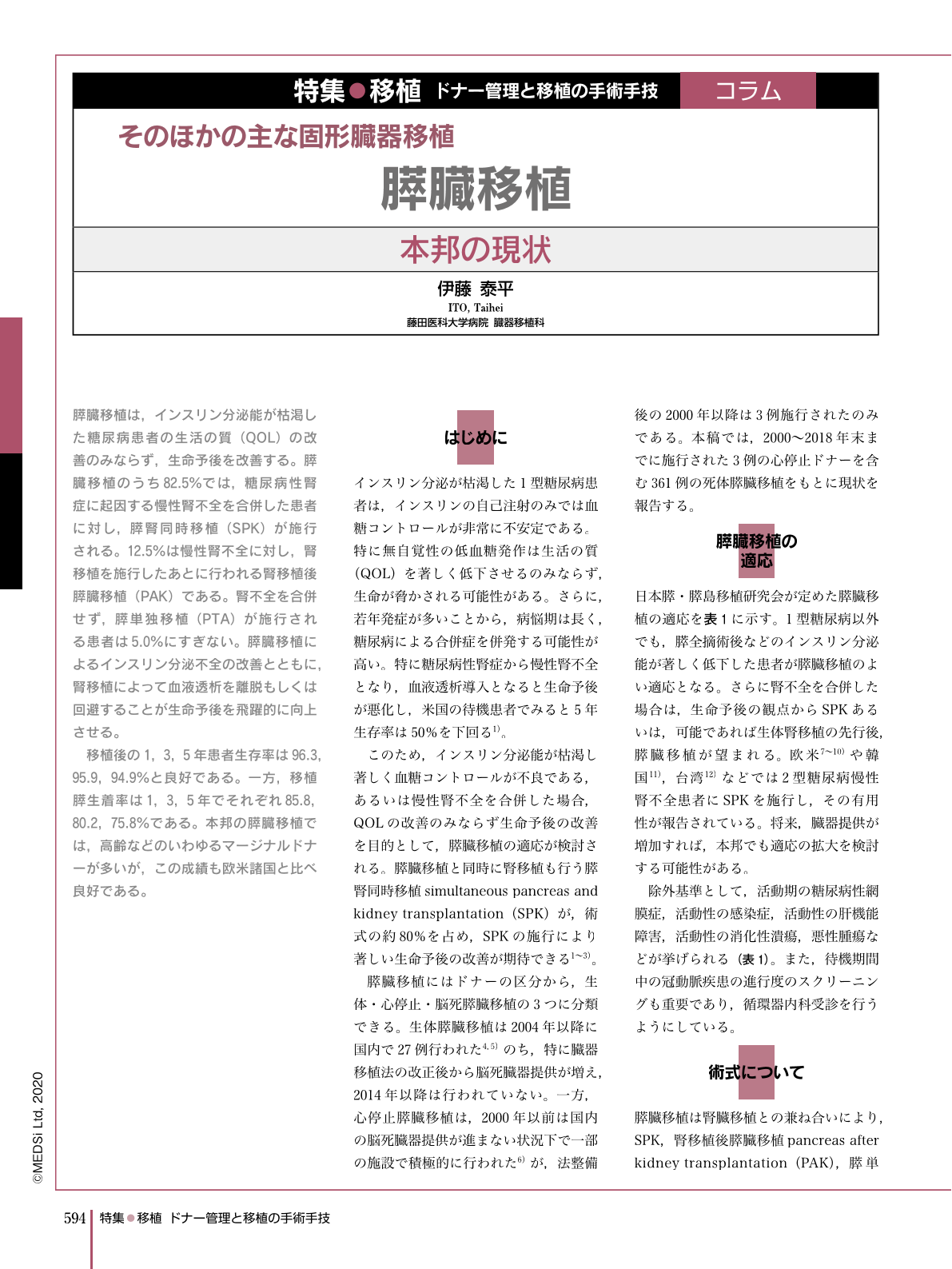Japanese
English
- 有料閲覧
- Abstract 文献概要
- 1ページ目 Look Inside
- 参考文献 Reference
膵臓移植は,インスリン分泌能が枯渇した糖尿病患者の生活の質(QOL)の改善のみならず,生命予後を改善する。膵臓移植のうち82.5%では,糖尿病性腎症に起因する慢性腎不全を合併した患者に対し,膵腎同時移植(SPK)が施行される。12.5%は慢性腎不全に対し,腎移植を施行したあとに行われる腎移植後膵臓移植(PAK)である。腎不全を合併せず,膵単独移植(PTA)が施行される患者は5.0%にすぎない。膵臓移植によるインスリン分泌不全の改善とともに,腎移植によって血液透析を離脱もしくは回避することが生命予後を飛躍的に向上させる。
移植後の1,3,5年患者生存率は96.3,95.9,94.9%と良好である。一方,移植膵生着率は1,3,5年でそれぞれ85.8,80.2,75.8%である。本邦の膵臓移植では,高齢などのいわゆるマージナルドナーが多いが,この成績も欧米諸国と比べ良好である。
Pancreas transplantation not only improves the QOL of diabetic patients with insulin secretion deficiency but also improves their life prognosis. In 82.5% of pancreatic transplants, simultaneous pancreatic kidney transplantation (SPK) was performed in diabetic patients with chronic renal failure due to diabetic nephropathy. Pancreas transplantation after kidney transplantation (PAK) accounted for 12.5% of pancreas transplantation procedures performed for diabetic patients with chronic renal failure due to diabetic nephropathy. Only 5.0% of patients underwent pancreas transplantation alone (PTA) without renal failure. Along with the improvement of insulin secretion with pancreas transplantation, the withdrawal or avoidance of hemodialysis in patients who receive renal transplantation dramatically improves their life prognosis.
The 1-, 3-, and 5-year survival rates of patients after transplantation were 96.3%, 95.9%, and 94.9%, respectively. On the other hand, the 1-, 3-, and 5-year survival rates of pancreatic transplants were 85.8%, 80.2%, and 75.8%, respectively. In Japan, although there were many so-called marginal donors due to factors such as higher age donors, the outcomes of pancreas transplantation were relatively good in comparison to Western countries.

Copyright © 2020, MEDICAL SCIENCES INTERNATIONAL, LTD. All rights reserved.


